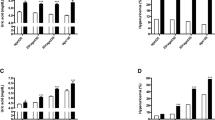Abstract
Context: The presence of several cardiovascular risk factors is observed in women with polycystic ovary syndrome (PCOS). On the other hand, the QTc interval duration, which is related to cardiac arrhythmia and sudden death, has not been investigated thoroughly in PCOS population. Objective: To investigate QTc interval duration and its relation to testosterone in women with PCOS. Design: Cross sectional case-control study. Setting: Outpatient setting, tertiary university medical centre. Patients: We enrolled 119 consecutive patients in whom PCOS was diagnosed based on oligomenorrhea, infertility (>2 yr), ineffective ovarian stimulation, and ultrasonographic criteria. The control group (controls) included 64 age-matched healthy women without clinical or laboratory evidence of PCOS. Interventions: In all participants we measured QTc interval duration on a standard electrocardiogram and determined plasma levels of high sensitivity C-reactive protein (hsCRP), endothelin-1 (ET-1), insulin, and testosterone. Main outcome measure: Shorter QTc interval duration in PCOS patients. Results: When compared to controls, PCOS patients displayed higher values of hsCRP (2.35±2.14 mg/l vs 1.18±1.24 mg/l; p=0.01), ET-1 (23.6±10.3 ng/l vs 12.9±20.7 ng/l; p=0.03), insulin (18.5±7.8 mIU/l vs 10.7±9.1 mIU/l; p=0.02), and testosterone (2.7±2.1 nmol/l vs 1.4±1.7 nmol/l; p=0.01). QTc interval in PCOS patients was significantly shorter than in controls (401±61 msec vs 467±61 msec; p=0.007), and inversely related to the plasma levels of testosterone (Spearman −0.45, p=0.005). Conclusions: QTc interval in PCOS patients is short, and inversely associated with increased levels of testosterone. QTc interval duration is not part of an adverse cardiac risk profile in PCOS.
Similar content being viewed by others
References
Ehrmann DA. Polycystic ovary sydrome. N Engl J Med 2005, 352: 1223–36.
Vryonidou A, Papatheodorou A, Tavridou A, et al. Association of hyperandrogenemic and metabolic phenotype with carotid intimamedia thickness in young women with polycystic ovary syndrome. J Clin Endocrinol Metab 2005, 90: 2740–6.
Schouten EG, Dekker JM, Meppelink P, Kok FJ, Vandenbroucke JP, Pool J. QT interval prolongation predicts cardiovascular mortality in an apparently healthy population. Circulation 1991, 84: 1516–23.
Makkar RR, Fromm BS, Steinman RT, Meissner MD, Lehmann MH. Female gender as a risk factor for torsades de pointes associated with cardiovascular drugs. JAMA 1993, 270: 2590–7.
Alpaslan M, Onrat E, Yilmazer M, Fenkci V. QT dispersion in patients with polycystic ovary syndrome. Jpn Heart J 2002, 43: 487–93.
Nowinski K, Pripp U, Carlström K, Landgren BM, Schenck-Gustafsson K, Bergfeldt L. Repolarization measures and their relation to sex hormones in postmenopausal women with cardiovascular disease receiving hormone replacement therapy. Am J Cardiol 2002, 90: 1050–5.
The Rotterdam ESHRE/ASRM-Sponsored PCOS consensus workshop group. Revised 2003 consensus on diagnostic criteria and long-term health risks related to polycystic ovary syndrome (PCOS). Hum Reprod 2004, 19: 41.
Toivonen L. More light on QT interval measurement. Heart 2002, 87: 193–4.
Diamanti-Kandarakis E, Alexandraki K, Piperi C, et al. Inflammatory and endothelial markers in women with polycystic ovary syndrome. Eur J Clin Invest 2006, 36: 691–7.
Bai CX, Kurokawa J, Tamagawa M, Nakaya H, Furukawa T. Nontranscriptional regulation of cardiac repolarization currents by testosterone. Circulation 2005, 112: 1701–1.
Fülöp L, Bányász T, Szabó G, et al. Effects of sex hormones on ECG parameters and expression of cardiac ion channels in dogs. Acta Physiol 2006, 88: 163–71.
Author information
Authors and Affiliations
Corresponding author
Rights and permissions
About this article
Cite this article
Vrtovec, B., Meden-Vrtovec, H., Jensterle, M. et al. Testosterone-related shortening of QTc interval in women with polycystic ovary syndrome. J Endocrinol Invest 31, 653–655 (2008). https://doi.org/10.1007/BF03345619
Accepted:
Published:
Issue Date:
DOI: https://doi.org/10.1007/BF03345619




